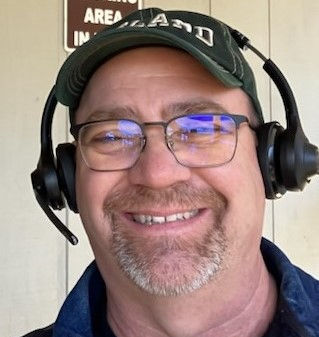Red Cross Volunteer Recounts Devastation to Indigenous Communities Following Alaska Typhoon
- NEIA Red Cross

- Nov 3, 2022
- 3 min read
By Ashley Peterson-DeLuca

When Scott Hampton booked a last-minute flight to Anchorage for a Red Cross deployment in mid-September, his family and friends had no clue why. The news of an historic storm surge caused by Typhoon Merbok in Western Alaska didn’t get much coverage in the lower forty-eight. The dual impact of the hurricanes in Florida and Puerto Rico took up most of the attention.
The storm that hit Alaska on September 15, 2022, was the worst typhoon in 70 years. After arriving in Nome, Alaska, by bush plane, Hampton began to experience the damage to the coastal communities. An elderly man living alone in Golovin told Hampton that he’d never seen the water rise so high. A woman in Nome recounted her amazing story: as she was sheltering from a fire in her apartment complex, a giant wave swept her out to sea — and she survived. Hampton saw homes that had floated hundreds of feet away in the flood waters. Whole beaches had disappeared, with the sand pushed into town. The hardest hit areas were small, remote indigenous villages.
Hampton, a Disaster Action Team (DAT) supervisor from Eastern Iowa, has been a volunteer for two years and been deployed 12 times. But he’s never had a deployment quite like this.
“Getting around was difficult. There are no roads in that part of Alaska. We had to charter bush planes to take us to the villages, which just had gravel runways,” says Hampton.

During his 17-day deployment, he visited about 30 families a day. He mostly did disaster intake, which means he verified the DAT’s earlier evaluation. In this role, he confirmed that a residence is uninhabitable or destroyed. If that was the case, then the family qualified for immediate assistance funds. While normally a straightforward task, the environment presented Hampton with additional challenges.
“There’s no signal in the bush, so we’d have to fly back to headquarters with the paper intake forms,” he said. “And, there are no fixed addresses. We had to assign GPS coordinates for the home. Well, in some cases where the home was before it floated away.”
Because there were very few vehicles – or even roads – in these remote villages, the local leader would meet Scott and his partner in the center of town and ferry them to damaged homes on the back of their quad runners.
Listening to residents, he learned that while the storm surge was a terrible experience, their real fear was the on-coming Alaska winter.

“People lost freezers full of meat they stored for the winter. There’s no Walmart out there. They can’t replace food or stuff easily,” he said. “They showed us their fishing camps that were completely destroyed. These camps are the livelihood and how they feed their families.”
But, that’s not all.
“They are in a dire position. Their homes are destroyed. The wet insulation means mold is likely. Everyone is predicting a brutal winter,” he said. “Everything must be flown in on small planes. They just have to put orders in and hope it arrives.”

Hampton said the Red Cross is helping to not just fix damage but prepare for winter. Teaming up with the National Guard, they are digging out sand displaced by the storm and creating roads to make construction easier. The Red Cross is replacing buoys, nets and other related gear at fishing camps so they could get back up and running. And, volunteers are packaging up mass purchases of Shop-Vacs, crack sealant, insultation and other rebuilding necessities to make it easier to fly them to the remote villages.
Because Hampton has a background in the military and law enforcement, he can remain calm while surrounded by damage and chaos. He said, “It is a very similar environment. You’re helping other people. It is unpredictable. People who had careers in law enforcement or the military thrive here.”
To learn how you can help others after a disaster, let us know you’re interested in becoming a Red Cross volunteer.












Comments